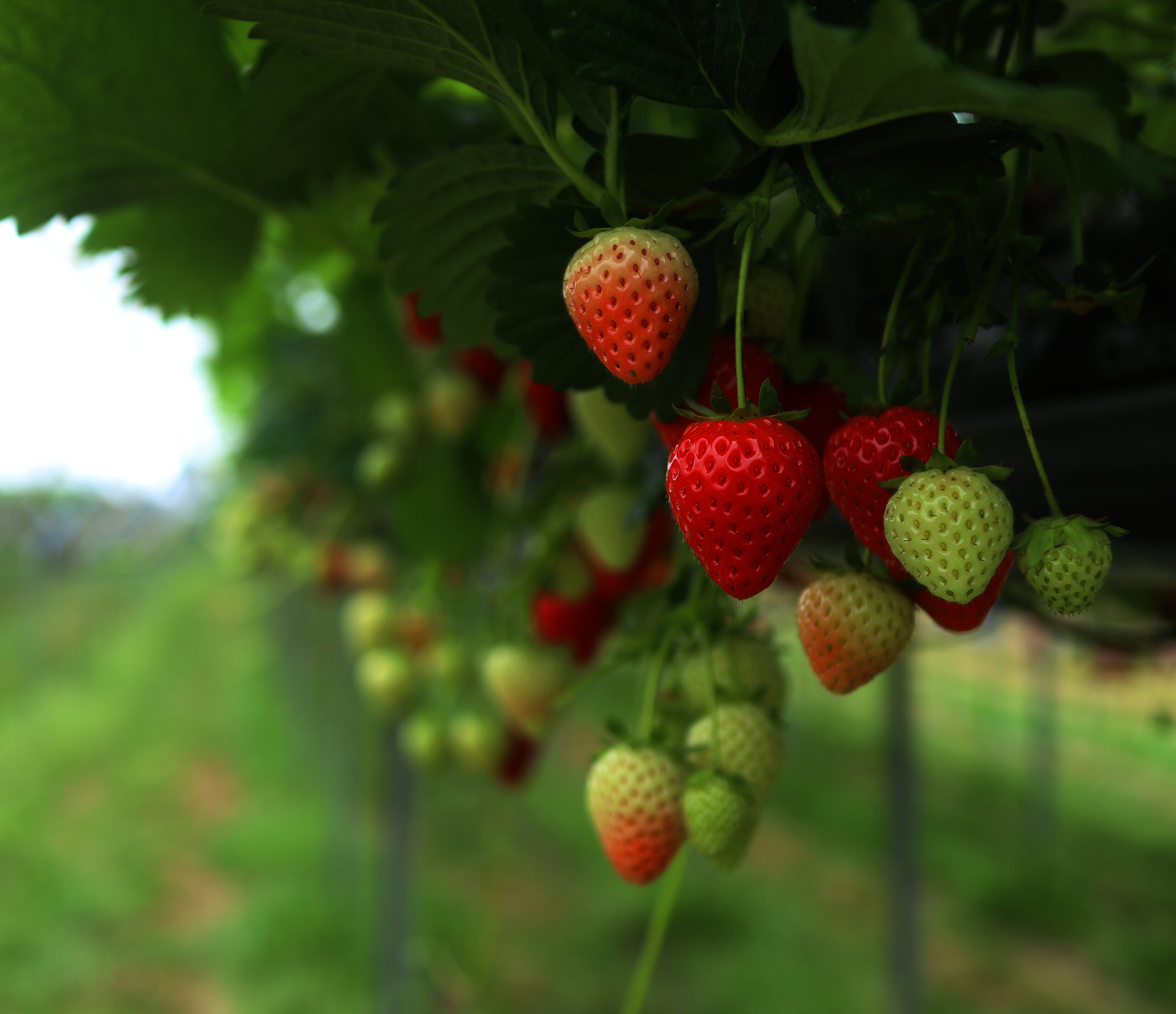It’s hard to believe that in around 16 weeks our strawberries will be ready for picking. And raspberries in about 20 weeks.
The plants are dormant at the moment and look very sorry for themselves. This period of total dormancy and inactivity is very important, not just for fruit plants but for all plants, including the asparagus we grow.
For plants to break bud normally, to grow without being stunted and to show normal flower truss expression, they must have a period of chill. Plants with insufficient chill produce short trusses a compact leaf canopy, with a higher proportion of misshapen fruits and smaller fruit size. You will find that all strawberries have different chill requirements depending on the variety.
Malling Centenary (the variety we grow here at Lower Ladysden) is a June bearer. A June bearing variety has one flush of flowers and fruit and crops over 4/5 weeks but not necessarily in June. An ever bearing strawberry plant, as the name suggests, produces flowers and fruit over a much longer period but is more difficult to grow consistent quality fruit.
Malling Centenary has quite a high chill requirement of around 1400 hours. Chill hours are measured using various models, the most commonly commercially used is hour accumulation below 7 degrees centigrade day or night. The simple maths of 7 x 24 hours = 168 hours shows that even at optimal conditions, 8.5 weeks below 7 degrees is required to satisfy the plants requirement.
When you visit the farm you may have noticed us putting plastic over the poly tunnels. We don’t start doing this until we are confident the plants have had enough chill and can start to accept some heat units known as GDH (Growing Degree Hours). That’s another story for another blog but explains why some strawberry seasons are earlier or later than others!
So a cold winter is crucial and plays a massive role in delivering the strawberry crops we all take for granted. Pest numbers are reduced during a cold winter also some plant diseases and weeds are suppressed so the colder months are more helpful for our strawberries than you might think!
Role on the Spring!
Steve
